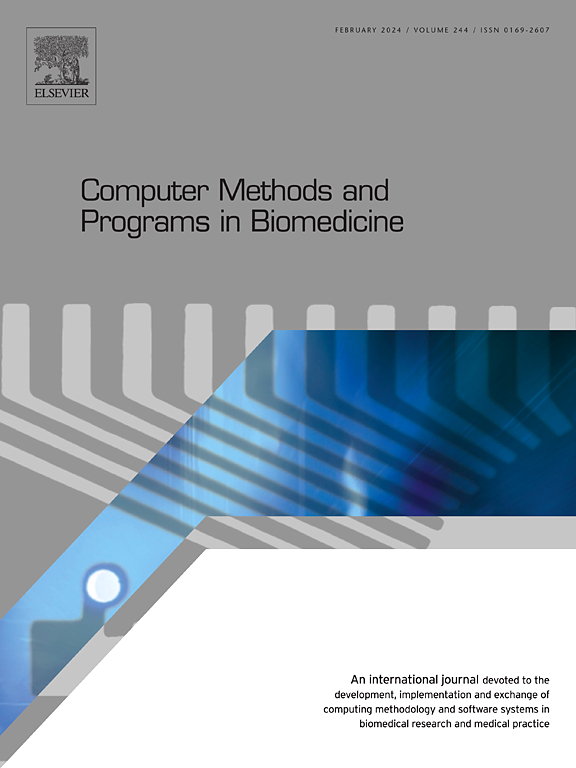Severity grading of hypertensive retinopathy using hybrid deep learning architecture
IF 4.9
2区 医学
Q1 COMPUTER SCIENCE, INTERDISCIPLINARY APPLICATIONS
引用次数: 0
Abstract
Background and Objectives:
Hypertensive Retinopathy (HR) is a retinal manifestation resulting from persistently elevated blood pressure. Severity grading of HR is essential for patient risk stratification, effective management, progression monitoring, timely intervention, and minimizing the risk of vision impairment. Computer-aided diagnosis and artificial intelligence (AI) systems play vital roles in the diagnosis and grading of HR. Over the years, very limited research has been conducted for the grading of HR. Nevertheless, there are no publicly available datasets for HR grading. Moreover, one of the key challenges observed is high-class imbalance.
Methods:
To address these issues, in this paper, we develop “HRSG: Expert-Annotated Hypertensive Retinopathy Severity Grading” dataset, classifying HR severity into four distinct classes: normal, mild, moderate, and severe. Further, to enhance the grading performance on limited datasets, this paper introduces a novel hybrid architecture that combines the strengths of pretrained ResNet-50 via transfer learning, and a modified Vision Transformer (ViT) architecture enhanced with a combination of global self-attention and locality self-attention mechanisms. The locality self-attention addresses the common issue of a lack of inductive bias in ViT architecture. This architecture effectively captures both local and global contextual information, resulting in a robust and resilient classification model. To overcome class imbalance, Decouple Representation and Classifier (DRC) - based training approach is proposed. This method improves the model’s ability to learn effective features while preserving the original dataset’s distribution, leading to better diagnostic accuracy.
Results:
Performance evaluation results show the competence of the proposed method in accurately grading the severity of HR. The proposed method achieved an average accuracy of 0.9688, sensitivity of 0.9435, specificity of 0.9766, F1-score of 0.9442, and precision of 0.9474. The comparative results indicate that the proposed method outperforms existing HR methods, state-of-the-art CNN models, and baseline pretrained ViT models. Additionally, we compared our method with a CNNViT model, which combines a shallow CNN architecture with 3 convolution blocks consisting of a convolution layer, a batch normalization layer, a max pooling layer, and lightweight ViT architecture, due to limited datasets. In comparison with the CNNViT, the proposed method achieved superior performance, demonstrating its effectiveness.
Conclusion:
The experimental results demonstrate the efficacy of the proposed method in accurately grading HR severity.
求助全文
约1分钟内获得全文
求助全文
来源期刊

Computer methods and programs in biomedicine
工程技术-工程:生物医学
CiteScore
12.30
自引率
6.60%
发文量
601
审稿时长
135 days
期刊介绍:
To encourage the development of formal computing methods, and their application in biomedical research and medical practice, by illustration of fundamental principles in biomedical informatics research; to stimulate basic research into application software design; to report the state of research of biomedical information processing projects; to report new computer methodologies applied in biomedical areas; the eventual distribution of demonstrable software to avoid duplication of effort; to provide a forum for discussion and improvement of existing software; to optimize contact between national organizations and regional user groups by promoting an international exchange of information on formal methods, standards and software in biomedicine.
Computer Methods and Programs in Biomedicine covers computing methodology and software systems derived from computing science for implementation in all aspects of biomedical research and medical practice. It is designed to serve: biochemists; biologists; geneticists; immunologists; neuroscientists; pharmacologists; toxicologists; clinicians; epidemiologists; psychiatrists; psychologists; cardiologists; chemists; (radio)physicists; computer scientists; programmers and systems analysts; biomedical, clinical, electrical and other engineers; teachers of medical informatics and users of educational software.
 求助内容:
求助内容: 应助结果提醒方式:
应助结果提醒方式:


